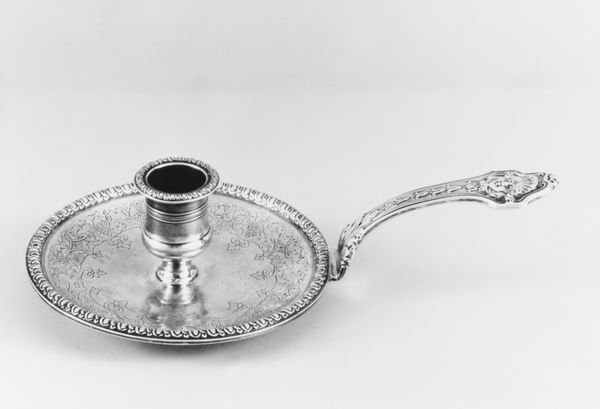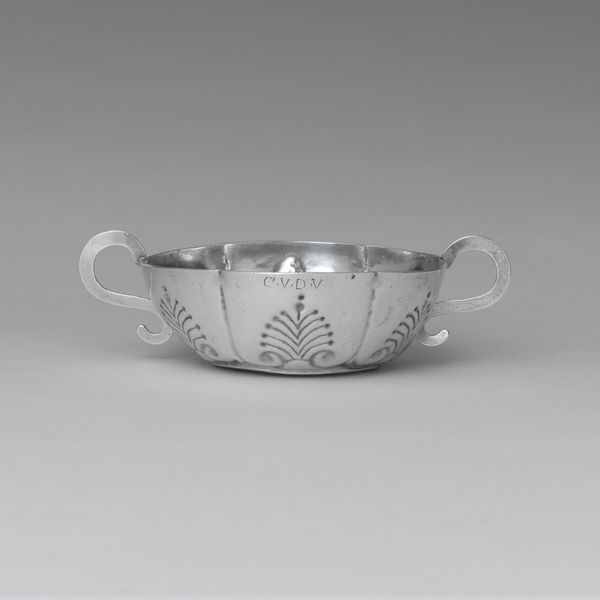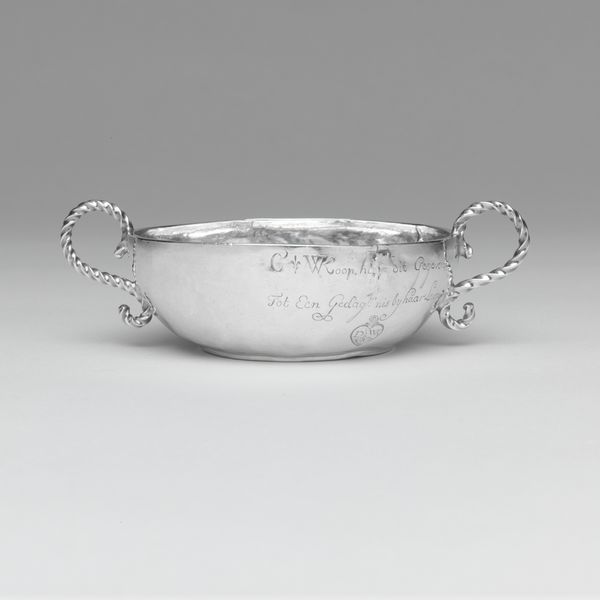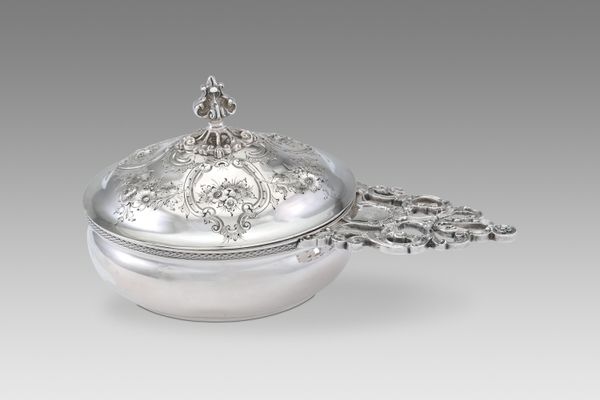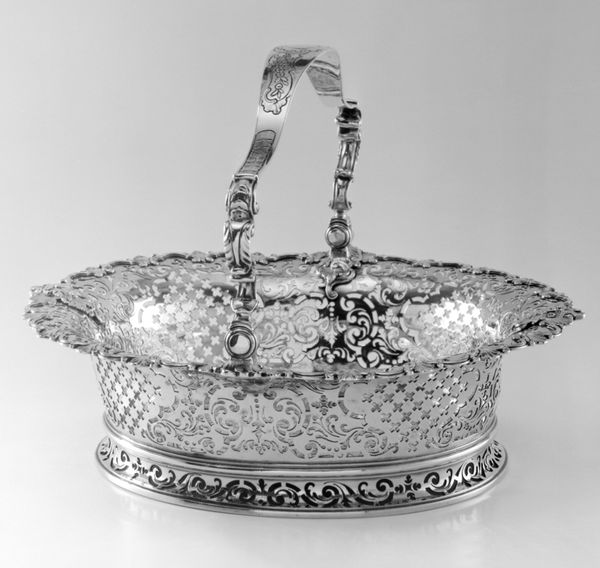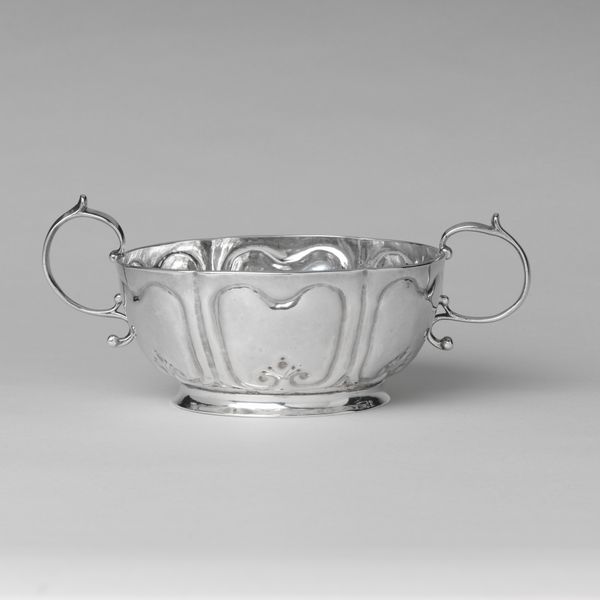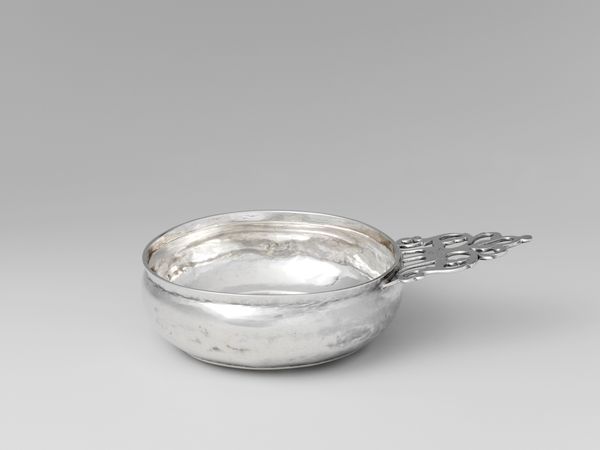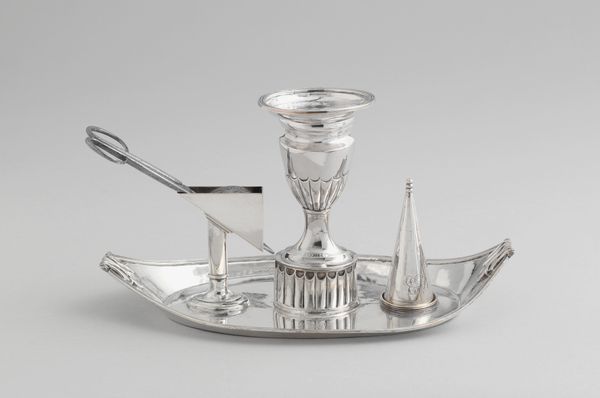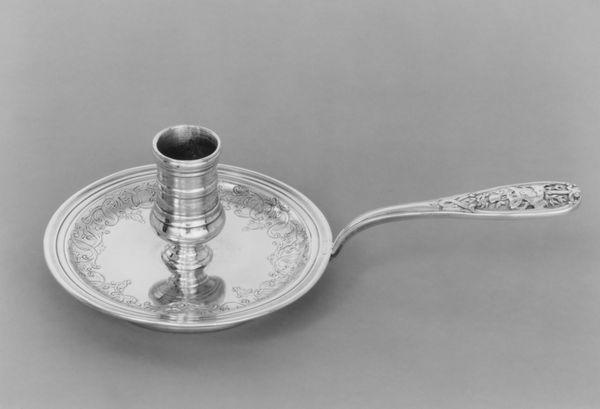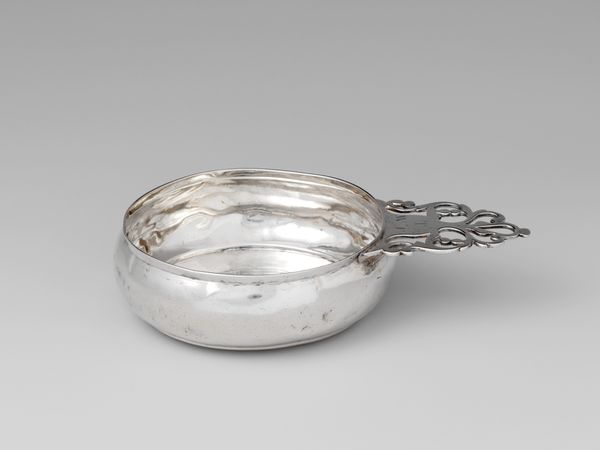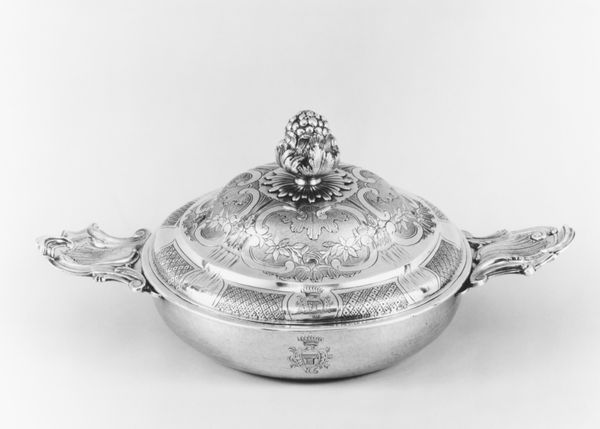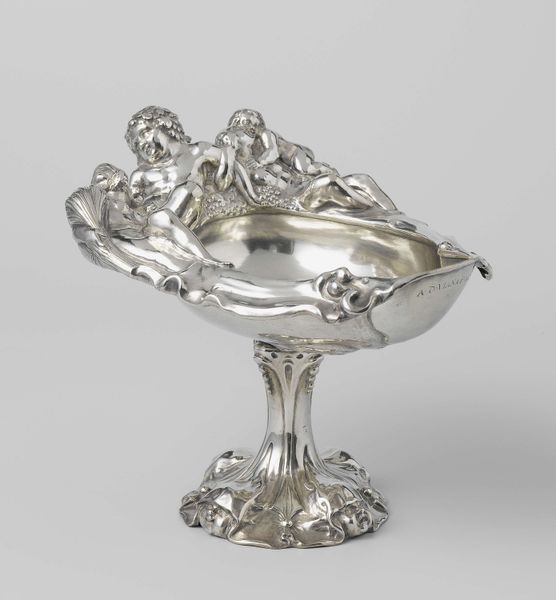
silver, sculpture
#
silver
#
baroque
#
sculpture
#
decorative-art
Dimensions: Overall: 2 × 7 1/2 in. (5.1 × 19.1 cm)
Copyright: Public Domain
Curator: Here we have a chamber candlestick crafted in silver by Jean-Baptiste Boullemer, dating from 1732 to 1733. Editor: Oh, my first thought is one of opulent comfort. It's so detailed and shiny; you can practically feel the weight and coolness of the silver. The craftsmanship really shines through. Curator: The Baroque style is quite evident, isn't it? These chamber candlesticks weren’t just light sources; they signified status and access. Can you imagine who would have owned such an object, moving from room to room, the candlelight illuminating their privileged world? Editor: Absolutely, this wasn't for the average citizen! These intricate designs scream luxury. It also makes you think about the sharp class divides of the period and how this little handheld object served as a quiet emblem of power. Curator: Indeed. Silver was closely tied to mercantilist wealth and state power. And let’s not forget the role of the guilds; a silversmith like Boullemer had to master his craft to create an object of this quality. Editor: Right, so how much does access to skill also affect what gets created? This candlestick prompts an immediate question about labor. Did the labor to extract and then work the silver replicate existing oppressions within this historical context? Curator: Certainly, the creation of such pieces always implicates complex labor systems and resource exploitation, particularly within the colonial context. Though it offers a tangible link to a specific past, it begs larger discussions about labor, wealth, and artistic practice. Editor: Right, so it’s more than a light source; it is a narrative tool reflecting and refracting the inequalities and oppressions that allowed its creation and context. That, I think, is why considering the cultural politics embedded within this Baroque styling gives new context and value. Curator: Yes, situating an artwork within this kind of broader perspective—considering those social and cultural underpinnings—makes it a powerful window into understanding the era from a more multifaceted point of view. Editor: Exactly. Thanks for lighting my way.
Comments
No comments
Be the first to comment and join the conversation on the ultimate creative platform.
